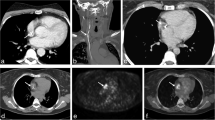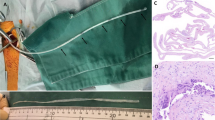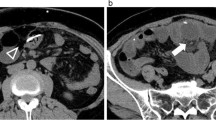Abstract
A connective tissue sheath that forms around the peritoneal catheter of silicone ventriculo-peritoneal (V-P) shunt tubing is quite often observed in children with V-P shunts. However, proof of the passage of cerebrospinal fluid (CSF) through these sheaths has been reported in only one published study to date. We present four cases associated with chronic malfunction of the V-P shunt peritoneal catheter. In these cases, CSF passage through the subcutaneous fibrous tract, which had a pericatheter connective tissue sheath, was demonstrated around the V-P shunt peritoneal catheter. In the first case the patient suffered intermittent headache attacks over a long period of time; abdominal migration of the peritoneal catheter was detected. The second patient, who had been asymptomatic in the follow-up period with an outgrown peritoneal catheter, was admitted with acute hydrocephalus symptoms. A peritoneal catheter disconnection was detected in another patient, who had had multiple shunt revisions previously. In the last case, an obstruction of the peritoneal catheter was detected. The existence of the subcutaneous fibrous tract and its function were demonstrated by radio-opaque shuntogram in two cases and radionuclide shuntogram in the other two cases. In all four cases V-P shunt revision was performed. Within this study, the possible passage of CSF through a fibrous tract in cases of migration, outgrowth, disconnection or obstruction of the peritoneal shunt catheter was demonstrated. In conclusion, patients with shunt malfunction with a well-grown pericatheter fibrous sheath who are either asymptomatic or minimally symptomatic and show no evidence of active ventricular dilatation on their cranial CT scan should not be regarded as having arrested hydrocephalus until radio-opaque or radionuclide shuntogram studies have been done.
Similar content being viewed by others
Author information
Authors and Affiliations
Additional information
Received: 26 February 1999
Rights and permissions
About this article
Cite this article
Kazan, S., Açikbas¸, C., Rahat, Ö. et al. Proof of the patent subcutaneous fibrous tract in children with V-P shunt malfunction. Child's Nerv Syst 16, 351–356 (2000). https://doi.org/10.1007/s003810050530
Issue Date:
DOI: https://doi.org/10.1007/s003810050530




